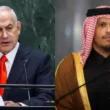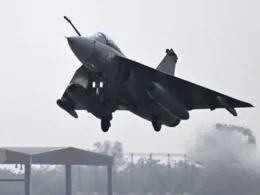India has formally turned down the United States’ offer to purchase F-35 fighter jets following President Donald Trump’s surprise move to impose a 25 percent tariff on Indian goods, effective August 1, 2025.
The decision signals a strategic recalibration by New Delhi, favouring defence partnerships rooted in technology transfer and local manufacturing.
According to Bloomberg, Indian officials were “shocked and disappointed” by the sudden tariff announcement. While no immediate retaliation is planned, New Delhi is now reassessing its trade options to preserve ties with its largest trading partner.
During Prime Minister Narendra Modi’s February visit to the White House, President Trump had personally pitched the F-35 deal as part of a broader strategic alliance.
READ: Trump announces 25pc tariff on Indian goods
However, Indian officials reiterated that the country’s defence focus remains aligned with domestic production through its ‘Make in India’ programme.
“The government is more interested in a partnership focused on jointly designing and manufacturing defence equipment domestically,” one official said.
India’s defence policy increasingly prioritises indigenous capability over high-end imports, unless they include significant technology sharing.
Though New Delhi has bought American platforms like the MH-60R Seahawks and P-8I aircraft, the F-35 offer lacked assurances for local production and technology access.
In contrast, Russia has stepped forward with an attractive alternative that fits India’s requirements. Moscow has proposed a joint package featuring the Su-57E fifth-generation stealth fighter and the Su-35M multirole jet.
The Su-57E offer includes full technology transfer, with production to take place at Hindustan Aeronautics Limited’s Nashik facility, where India has already assembled over 220 Su-30MKIs.
The localisation rate may reach 60%, enabling Indian systems like the Astra missile and Virupaksha AESA radar to be integrated.
Under the proposal, 20–30 Su-57E fighters could be delivered in three to four years, with total deliveries reaching 100 jets by the early 2030s.
To meet short-term needs, Russia’s Su-35M, which shares 80% components with India’s existing fleet, has also been offered to bridge squadron gaps.
India’s rejection of the F-35 deal underscores its evolving defence strategy—favouring self-reliance, domestic capability, and long-term industrial growth over foreign dependency.










